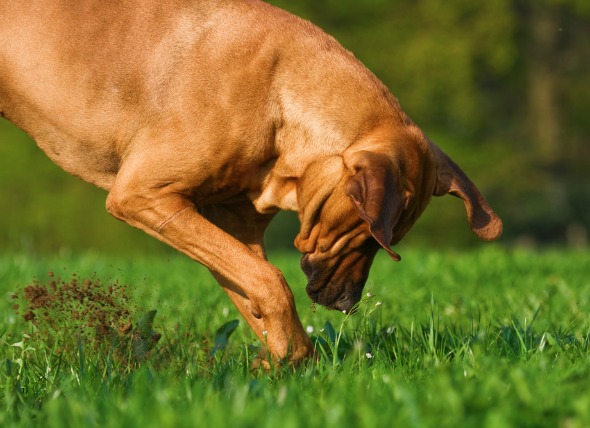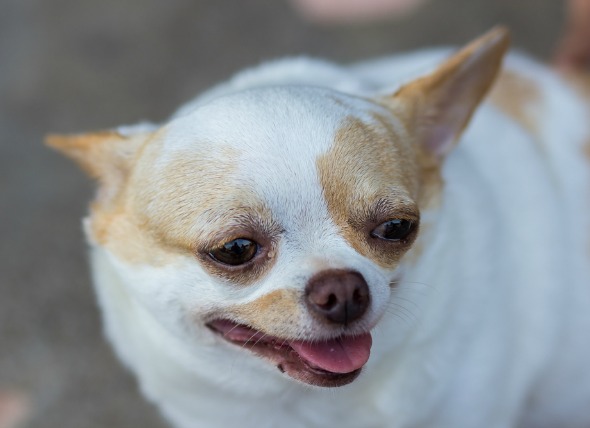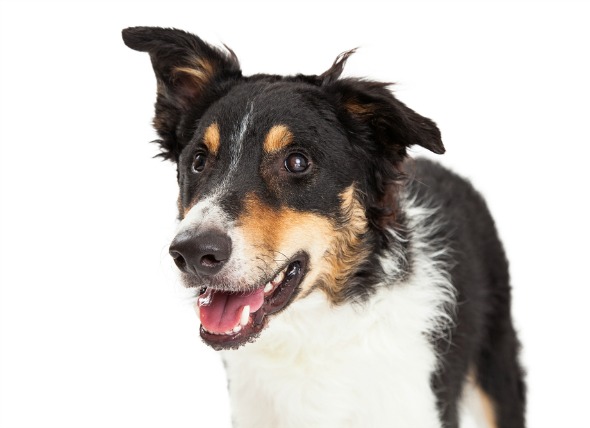
Jumping, Digging, Chasing, and Stealing Behaviors in Dogs
All of these actions are within the range of normal dog behaviors. However, a dog that is not kept active enough may behave excessively in one or more of these ways. This can be especially true of dogs that are normally high energy by genetic disposition or character.
Jumping up excessively as part of a greeting, for example, can be associated with separation anxiety and the excitement of having the human companion return home. Digging can often be associated with other behavioral disorders, neurologic disorders, or abdominal pain.
Symptoms and Types
- Jumping on people
- During arrivals, departures or greetings
- Exploring the contents of countertops
- Digging
- Along a fence line
- In areas of recent gardening
- At rodent holes
- On interior flooring
- Worn claws (nails)
- Stealing
- Items displaced, hidden
- Food items missing from surfaces (i.e., tables)
Causes
- Jumping
- Excitement, encouragement of excited behavior
- Separation anxiety
- Digging
- Following scent of rodents
- Anxiety
- Regulation of body temperature
- Boredom or lack of adequate exercise
- Hunting behaviors (food catching or retrieval)
- Escape from confinement
- Pain
- Separation anxiety
- Obsessive-compulsive disorder (OCD)
- Neurologic disease
- Stealing
- May be attempt to get your attention
- Desire for a food item, lack of internal discipline
- Chasing
- Herding instinct
- Hunting
- Play
- Defense
Diagnosis
Your veterinarian will perform a complete physical exam on your dog, including a neurological exam. A complete blood profile will be conducted, including a chemical blood profile, a complete blood count, a urinalysis and an electrolyte panel. Before your doctor concludes a behavioral basis for your dog's unruliness, other non-behavioral causes will need to be ruled out or confirmed first.
In addition to the medical work-up, your veterinarian will need a background history of your dog's health, living conditions, level of activity the dog is allowed each day, diet, family background, if possible, and the level of training you have given to your dog.
Treatment
If your dog is not found to be suffering from any underlying health problems, it may be seen on an outpatient basis. Medical care and prescriptions will be entirely dependent upon whether there is an underlying condition that requires medical treatment. Otherwise, if your dog is diagnosed with a behavioral problem, your veterinarian will advise you to begin by increase your dog's activity levels.
Follow-up appointments will assess the progress your dog is making and adjust the treatment accordingly. If your doctor feels that your dog's behaviors can be modified by training, you will be referred to a behavior specialist.
Living and Management
Tips to Preventing Jumping:
- Use a head collar and leash to control movement
- Greet visitors outside – away from dog
- Keep the dog in another room until the visitor is seated
- Teach your dog “sit” and “stay” as an appropriate greeting
- Practice having the dog sit for a food reward in different areas of the house
- Say “stay” when the sitting is a few seconds; take a step away, return to the dog and reward; increase time to 3–5 minutes.
- Keep sessions reasonable; 3–5 minute sessions with 8–12 repetitions per session
- Repeat near the door when leaving the home and returning
- Have the dog sit for a food reward when returning from work, etc.
- Reward the dog for remaining seated as visitors enter
- Dogs that like to retrieve and are too excited to sit may do better if a ball is tossed as a visitor enters
- When guests call, walk calmly to the door and speak in a quiet voice before allowing them in
- When the dog jumps on guests have them turn away
- Avoid stepping on the dog's toes or squeezing the paws
Prevent Digging
- Adequately heat or cool dog’s shelter
- Control rodent population around home
- Resolve separation anxiety, phobias, or OCD
- Increase the dog's exercise routine
- Create an area where it is acceptable for the dog to dig in, such as a plot of ground or children's sandbox.
- Using aversive stimuli, redirect the dog to another activity as it starts to dig; loud noise and water spray may distract the dog
Prevent Chasing
- Use a no-pull harness or head collar
- Desensitize (gradually expose to) and counter-condition (teach a different response) the dog to the stimulus
- Use the “sit-and-stay” command with the addition of a “look” command, while using a treat brought up to eye level
- Work in a quiet yard with leashed dog: sit, stay, step away, return, look, and reward
- Keep sessions reasonable; 3–5 minute sessions with 8–12 repetitions per session
- If able to keep dog's attention, stage the chase stimulus to pass by at a great distance (which shortens as dog improves) while training the dog
- When dog ignores the chase stimulus in the yard, try the same exercise while on a walk
Prevent Stealing
- Give adequate attention, exercise, and toys
- Do not chase the dog; walk away, get a treat, and call the dog to you
- As the dog is dropping the “stolen” item to take the treat, say “drop,” and “good dog,” and then give the reward
- Give a second treat, preventing a “race” for the dropped item; hide the item
- Ignore the dog if it retreats under the furniture
- Place food out of dog's reach
- Use a motion detector


 Anemia Due to Iron Deficiency in Dogs
Anemia, Iron Deficiency in Dogs
When the bo
Anemia Due to Iron Deficiency in Dogs
Anemia, Iron Deficiency in Dogs
When the bo
 Enlarged Heart (Dilated Cardiomyopathy) in Dogs
Heart Muscle Disease in Dogs
Dilated cardi
Enlarged Heart (Dilated Cardiomyopathy) in Dogs
Heart Muscle Disease in Dogs
Dilated cardi
 Obesity in Dogs
Excessive Weight in Dogs
Obesity is a nutr
Obesity in Dogs
Excessive Weight in Dogs
Obesity is a nutr
 Fluid in the Lungs in Dogs
Pulmonary Edema in Dogs
Pulmonary edema is identi
Fluid in the Lungs in Dogs
Pulmonary Edema in Dogs
Pulmonary edema is identi
 Arthritis (Septic) in Dogs
Toxic Inflammation of the Joints in Dogs
Septic a
Arthritis (Septic) in Dogs
Toxic Inflammation of the Joints in Dogs
Septic a